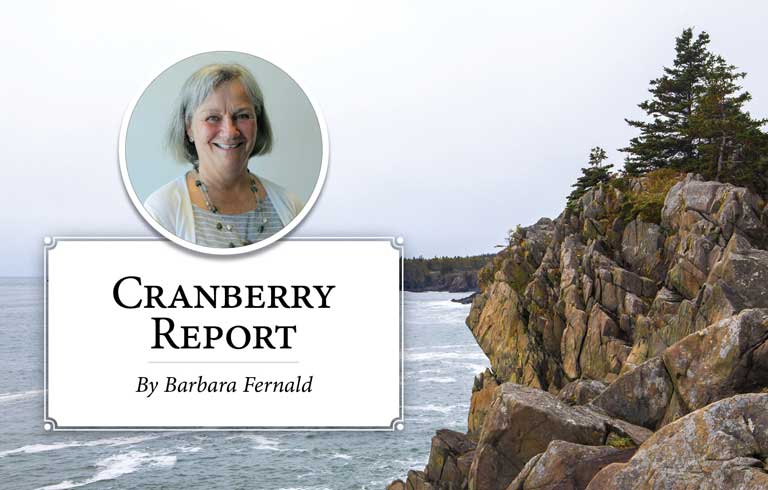On Little Cranberry Island, the ever-present birds are one of the biggest reasons I love my life here. The company of my fluffy little friends keeps me entertained throughout the year. Our two bird feeders attract all the year-round faithful and quite a few summer visitors.
One of the feeders was a gift from my brother, Steve, over 20 years ago. When he bought it from an Audubon center, the salesclerk recommended several ideas for squirrel “deterrents” and my brother said, “No need. They have no squirrels on Little Cranberry Island!”
“What? I want to live there!” was the clerk’s reply. It’s true. Out here, there are no squirrels for us to discourage. It’s an island of plenty for the birds.
This summer seemed especially busy with birds. Activity at the feeders was almost non-stop. Orioles showed up to eat the oranges and starlings arrived in hordes to eat as much suet as they could.
We watched their babies under our feeder with fluttery wings and open beaks in their first days out of the nest.
The suet also attracted hairy and downy woodpeckers and then their offspring. One day, one of their fledglings tried to land on the feeder’s metal pole, only to take a 2-foot slide to the bottom while his two feet hung on for dear life!
A cardinal family arrived for the sixth year in a row. We watched their babies under our feeder with fluttery wings and open beaks in their first days out of the nest. After a week or so they resembled teenagers venturing to the feeder without their parents, flying in and out of the hydrangea bush in short trips to practicing their landings.
We saw a variety of young birds this summer. More than we usually get to see. There were blue jays, starlings, finches, and sparrows all clamoring for attention while the parents turned their heads away. Even the young crows hung out in our yard. (Those big babies are quite the incessant whiners, but they do outgrow it by August.)
My garden also attracted an abundance of birds as it was full of flowers, bugs, and seeds. On any day in August there were young juncos, chickadees, and sparrows hopping from fence to ground to plant to fence, practicing their skills and eating well.
Hummingbirds and butterflies passed through regularly, attracted by the coneflowers, zinnias, and Joe Pie weed.
I planted milkweed seedlings a few years ago, hoping to give the monarch butterflies a place to lay eggs. This year the plants were finally established, and I saw my first teeny caterpillar on a leaf near the hole where his egg must have hatched. I looked under leaves and noticed more eggs, very excited to think I was doing something to help the monarchs.
I proudly checked on “my” caterpillar each morning. He got bigger by the day as he moved from plant to plant. I started to picture a future butterfly hatchery right in my own garden.
Even though there were many obvious holes in the leaves where eggs had hatched, I never saw any more tiny caterpillars. I thought that monarch caterpillars had no predators. I always believed the toxicity of the milkweed kept them from being eaten, so what had eaten these babies? Snails? Did they do it?
My one little guy was fat and ready. He crawled off the milkweed and onto a nearby iris leaf. I couldn’t wait to check on him the next day to see how far he went before making his chrysalis.
The next morning I looked out at my garden. A chickadee was sitting on an unopened flower of my Asian lily plant, violently tearing away at the bud. Such odd behavior from my little friend who I usually watch taking one seed at a time and flying daintily away.
When I looked later for the caterpillar or its chrysalis, it was gone. I turned to Google to solve the mystery and learned something new. Some birds don’t mind the toxicity of monarch caterpillars and the chickadee is one of them. My loyal year-round buddy was a caterpillar killer!
Next year, if I hope to raise more monarch caterpillars, I’ll need to find a way to baffle the chickadees’ access to my milkweed plants.
Maybe I’ll call Audubon and ask if they can recommend a chicka dee-dee deterrent!
Barbara Fernald lives on Islesford (Little Cranberry Island). She may be contacted at fernald244@gmail.com.





